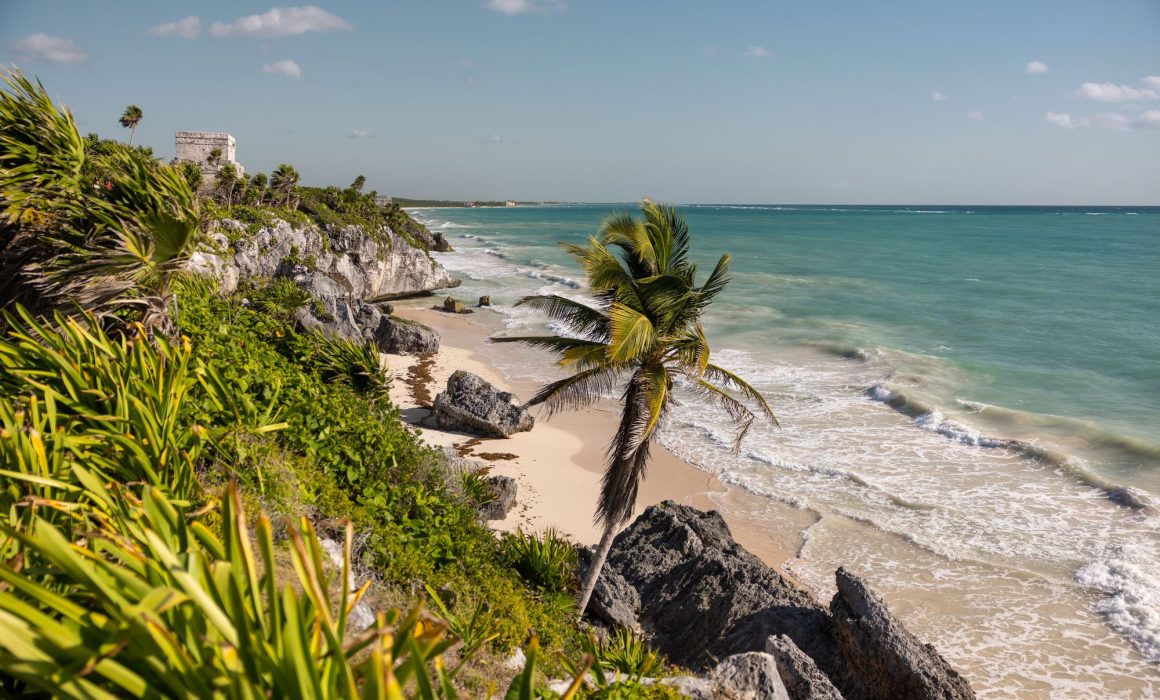The First-Timer’s Ultimate Travel Guide to Tulum, Mexico
Last Updated on April 21, 2024
It’s hard not to fall in love with the sun-kissed city of Tulum. Just two hours away from the Cancun Airport, Tulum’s proximity and fantastic views make it a quick and perfect getaway. Whether it’s the magical cenotes, the bountiful beaches, or the sun rising over towering ruins, there’s just so much beauty in this little stretch of Mexico. To ensure you have the best experience, I’ve compiled a first-timer’s ultimate travel guide to Tulum.
I visited this tourist hotspot in December, which is one of the best times to come to Tulum. The peak season in Tulum is considered December to April, but the warm city is great to visit most times of the year.
This post may contain affiliate links. I may receive a commission for purchases made through the included links. I will only recommend products and companies that I personally trust and recommend.
First-Timer’s Travel Guide to Tulum, Mexico
Places to visit
Cenotes
Two things make Tulum a distinct tourist hotspot: the cenotes (limestone cave systems with underground pools and rivers), and the ancient Mayan ruins.
The cenotes are especially a must-see attraction to this part of Yucatan. They’re unique to the peninsula; the sparkling clear waters and complex limestone structures make for a lot of mystical photo spots.
Keep in mind that you’ll need to bathe beforehand and wear life jackets when exploring these cenotes. Most also forbid you from wearing sunblock or any other chemicals that may pollute the waters.
With all that in mind, let’s go over some of the must-see cenotes in the region!
Cenote Suytun
By far my favorite cenote in Tulum is Cenote Suytun. It’s quite popular and will likely have long lines for photographs during peak hours, but the experience is more than worth the wait.
The cenote has a brilliant circular viewing platform where the sun peers down from an opening above the stalagmites. Historians believe that Suytun, like many of Yucatan’s 6,000 cenotes, was a sacred ceremonial space for the Mayans. It’s very easy to imagine that when you first walk on that platform.
The heavenly lights and calm waters make for a breathtaking shot that feels almost religious when you’re there. Depending on the time and weather, the waters may rise high enough that you’d have to swim to the platform, or dry out and pool flatly by the rocky base.

Cenote Suytun
Suytun is busiest during midday when the light above the platform peers directly down. You can also get good views if you come earlier in the morning before the crowds emerge. During peak hours, you’ll only get 15 seconds to take pictures around the famous platform, so I recommend coming in before the crowds to get the best experience.
The entrance to Suytun opens around 9 in the morning to 4:30 in the evening, and it costs around $6.50 (120 pesos) to enter. You can find more information on the Cenote Suytun website.
Cenote Dos Ojos
There are actually two cenotes in Dos Ojos, which is where the area gets its Spanish name of “Two Eyes”. These two cenotes are connected by underground cave systems brimming with life, which is why they’re perfect for snorkelers and divers to explore.
One thing to note about these cenotes is that their waters are crystalline blue. Despite being a profoundly popular tourist hotspot, Dos Ojos has been carefully maintained. Its glowing hue and transparency remain so pristine that you can count all the rocks and grains of sand below.
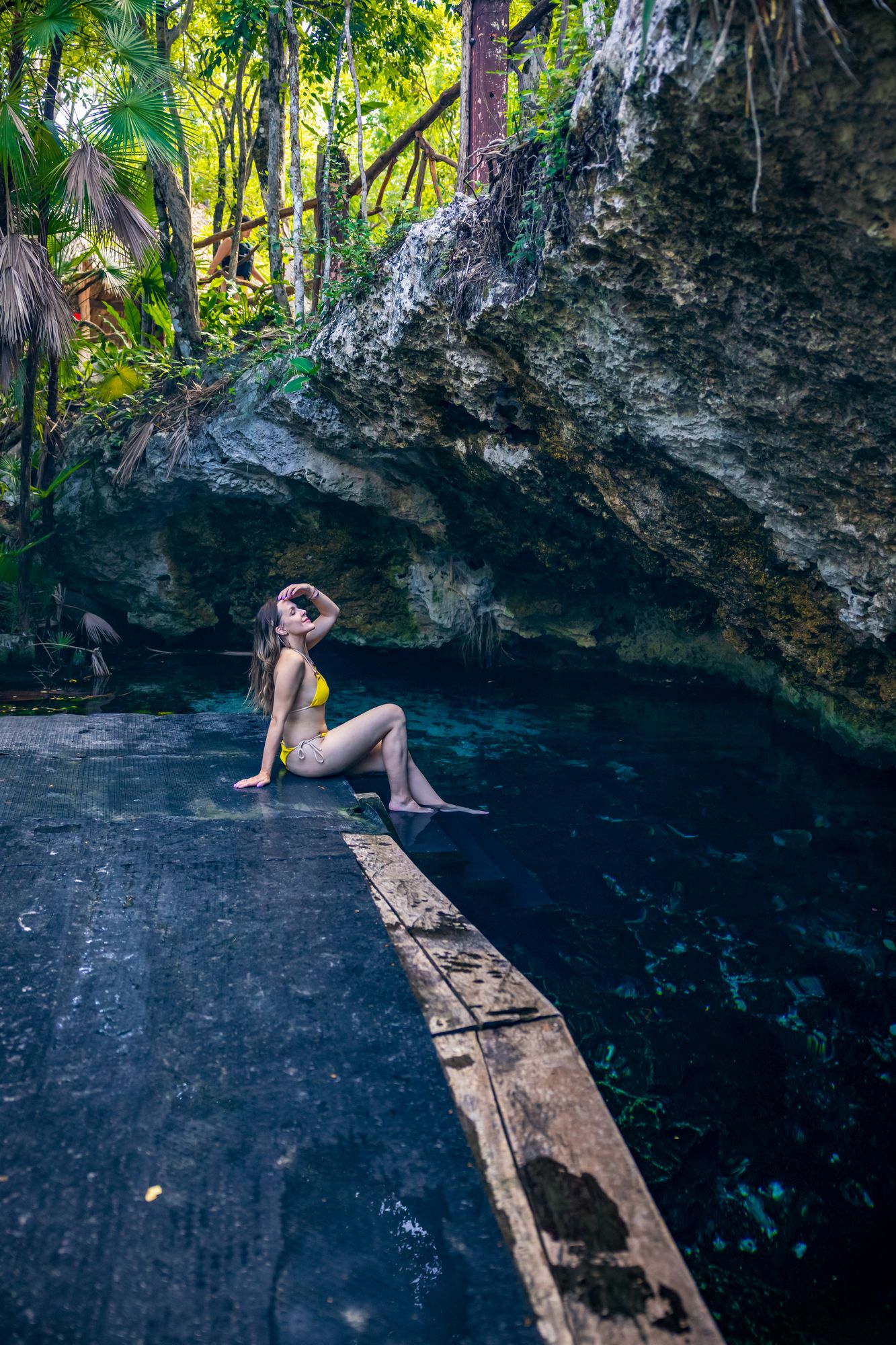
Cenote Dos Ojos
The area is open from 8 in the morning to 5 in the evening, and it costs around $14 (or 200 pesos) to enter. You can also rent out snorkeling equipment for around $6 (or 100 pesos). You can find out more on the Cenote Dos Ojos informational website.
Mayan Ruins
Shielding the jungles and towering over the seas, Tulum’s present-day name means “wall,” hinting at the area’s important role as a protective measure and coastal port for the Mayans.
Many ancient forts and structures were built along the coast and forests of this city. Most of them stand now as reminders of the past and cultural artifacts of the Mayan civilization.
Here are some of my favorite ruins to reflect on during my visit to Tulum!
These ruins are one of the most famous in all of Mexico and have been considered UNESCO World Heritage sites since 1988. Named after its closeness to the famous cenotes of the Tulum area, these ruins were once a thriving, bustling city full of commerce and culture.
The central attraction of these ruins is the Temple of Kukulcan, a magnificent pyramid structure that stands at the heart of the area. There are steps leading to the peak of the pyramid and intricate doorways that lead to the inner halls of the ‘castle.’
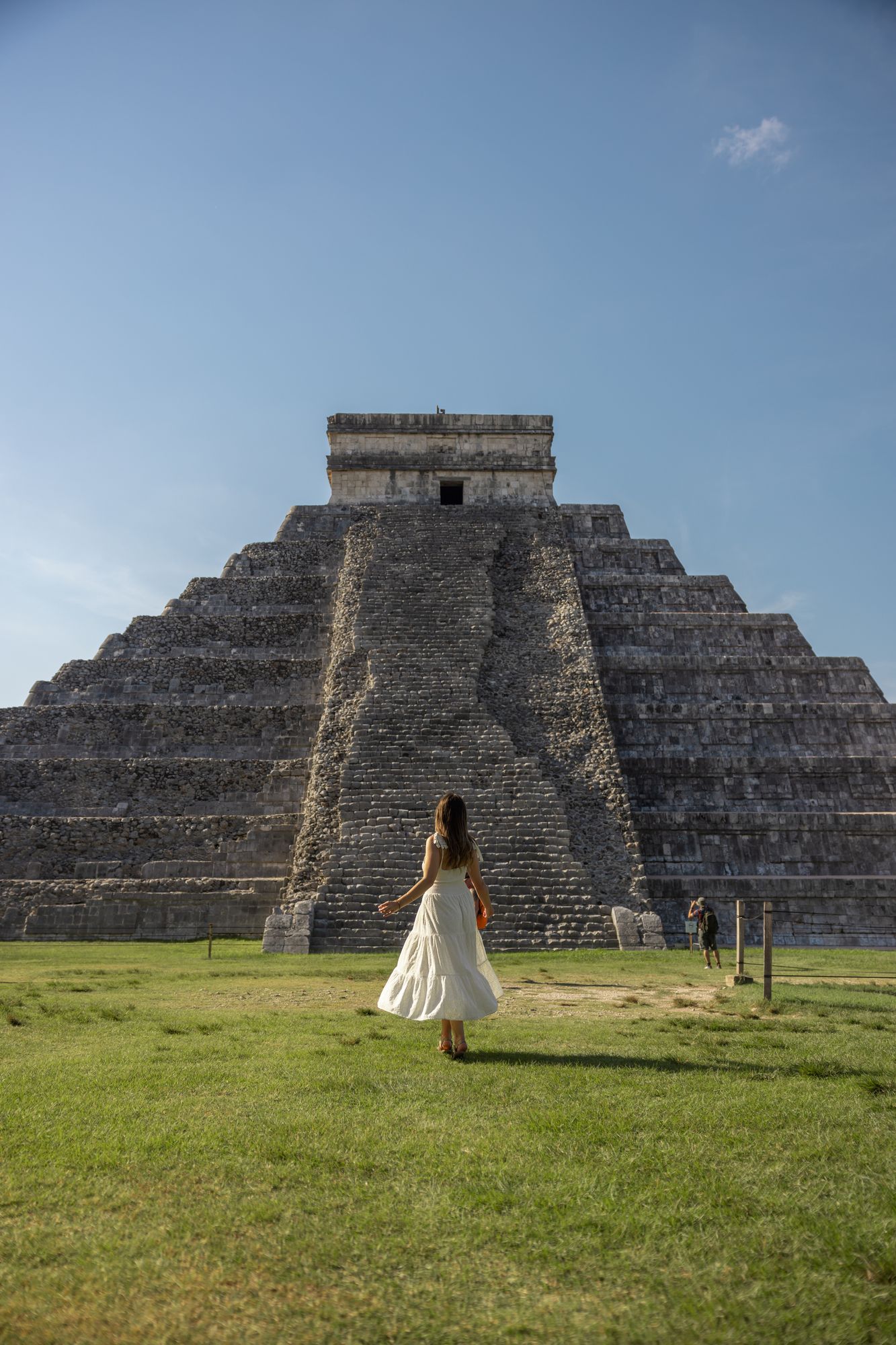
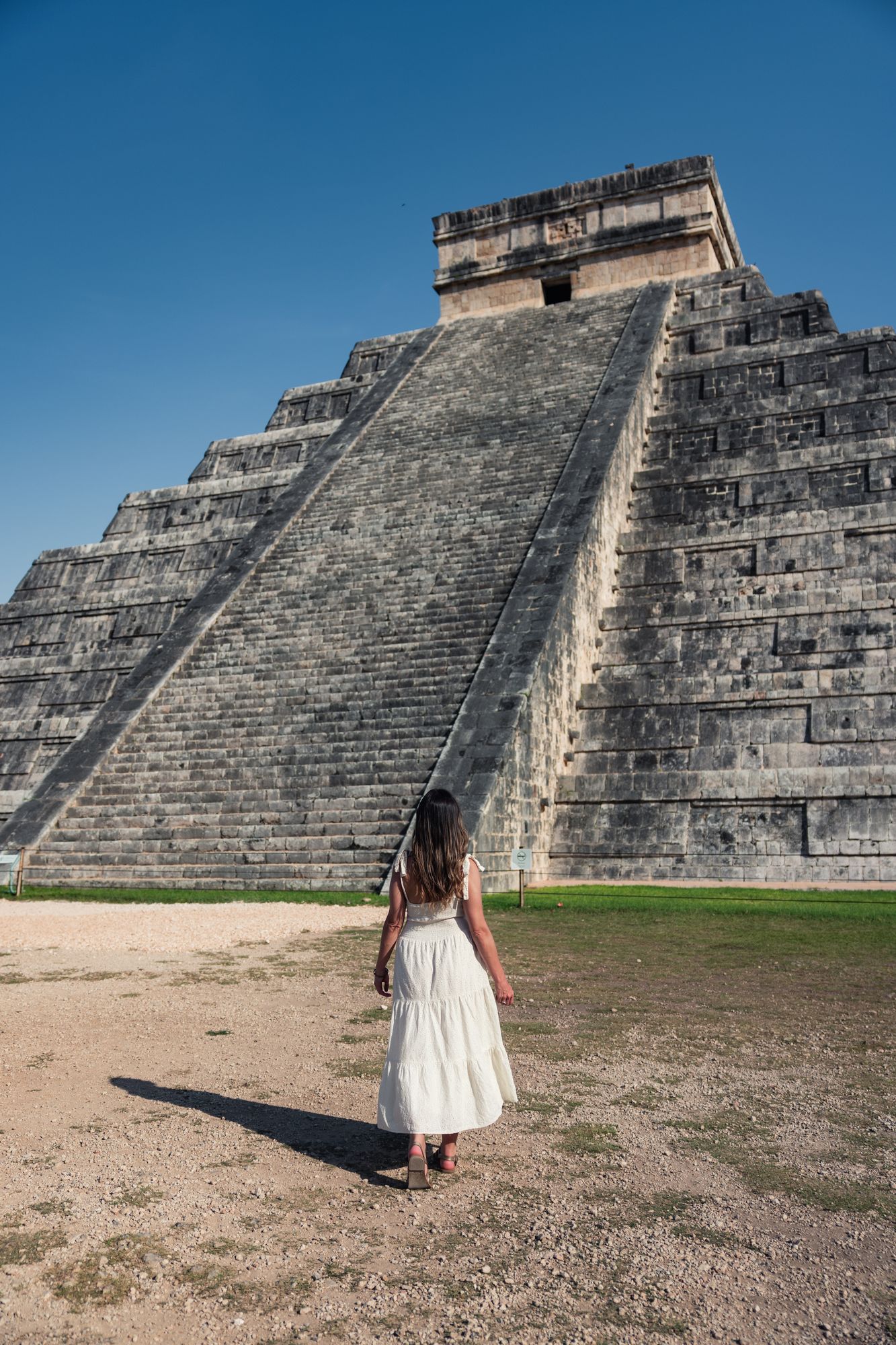
Temple of Kukulkan in Chichén Itzá
The area also holds two major cenotes that sustained the old civilization within these borders. Of the two, the Sacred Cenote is the most notable and seen over most of the rituals from this ancient civilization, held to summon rain from the god Chaac.
It’s not suitable for swimming like other cenotes in the region, but the history and nature surrounding the area only prove its importance to the Itzá community.
Tulum Ruins

Tulum Ruins over the beach
The location of these ruins is what makes them so spectacular to explore. The Tulum Ruins are the remains of the great seafaring ports of Tulum, where people would trade precious gems from across the seas.
Great walls protected this city from overseas invaders, and they now remain to keep the great temples company. There’s a structure simply called El Castillo stranded on the cliffside above Tulum’s beaches, and pathways that lead down to the beautiful shore of this forgotten city.
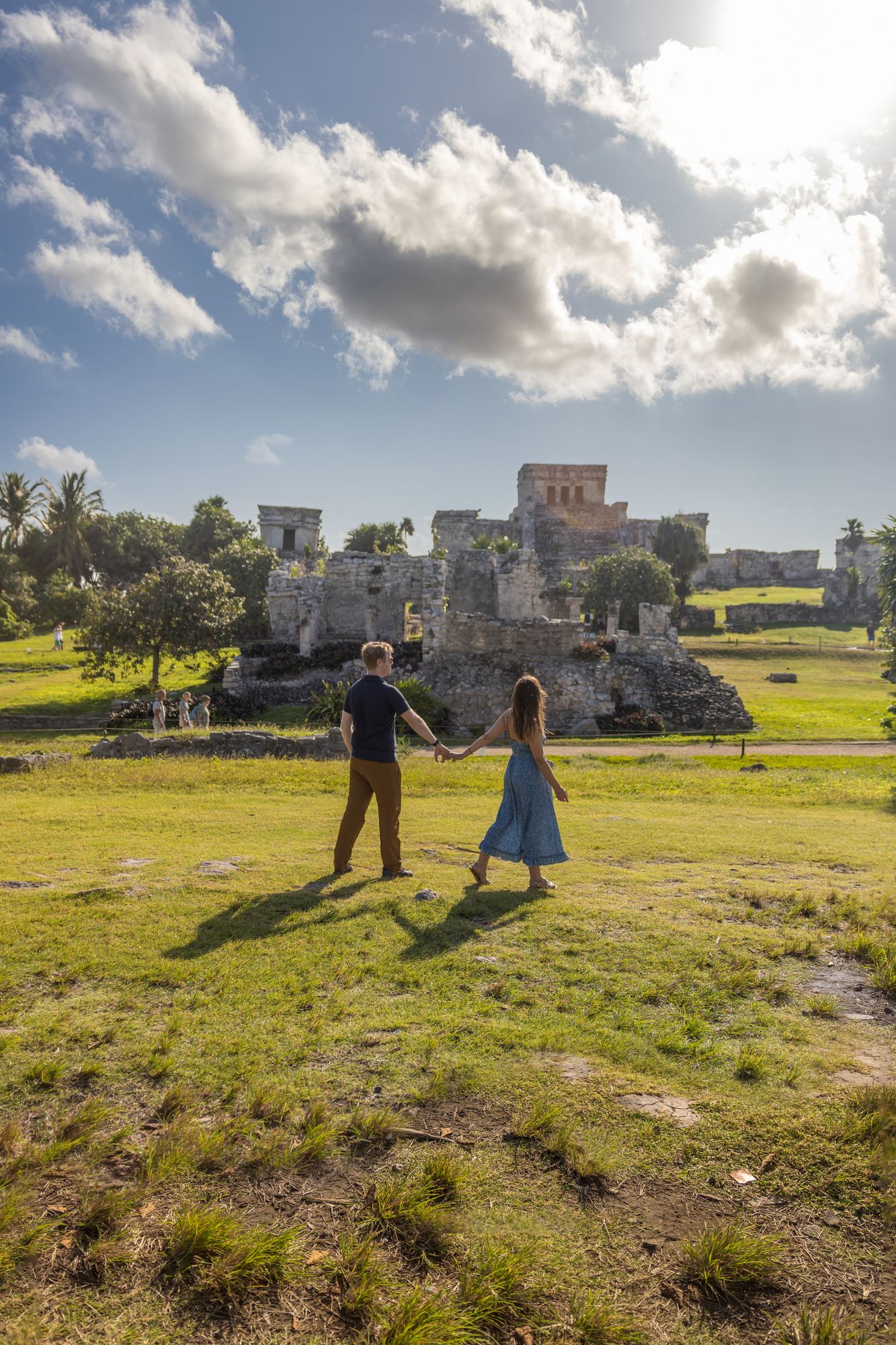
Walking along the Tulum Ruins
If you’re looking for vistas, just standing along Playa Ruinas and El Castillo will give you a great sea view from the tall cliffsides. The beaches are also a warm and comforting way to relax under the shadows of these structures.
You can purchase an entrance for around $5 or 90 pesos. The entrance opens around 8 in the morning and closes at 5 in the afternoon.
Archaeological Zone of Muyil
A lesser-known ruin in the Yucatan region, this zone includes three major structural sites with complex canals running throughout. These ruins are more densely packed amidst the jungles of Yucatan while still being connected to the vital lagoon of Chunyaxché.
Many of Tulum’s ruins are best visited with an informed tour guide who can lead you through the history of the region. The Zone of Muyil in particular would benefit from a tour guide the most, with much of the terrain being more varied compared to some other areas. They even offer boat tours along the river that runs through the old city.
The zone opens from around 9 in the morning to 3 in the afternoon. It costs $4.2 or 70 pesos to enter.
Ven a la Luz

Ven a la Luz
You may have seen South African artist Daniel Popper’s famous work on Instagram while searching around Tulum. This giant wooden statue of a person opening their chest for passersby is called Ven a la Luz (or “Come into the Light” in Spanish) was installed during an art festival in 2018, and it’s since become one of Tulum’s most iconic art pieces.
You’ll find this statue in Ahau Tulum among many others in the Tulum Sculpture Park. The park opens at 9 in the morning, closes at 6 in the evening, and has a $3 entrance fee.
Beaches & Cenote Clubs
As a coastal tourist hotspot, it’s not hard to imagine that Tulum has a great variety of beach clubs. Most of these clubs require you to pay an entrance fee or offer a minimum purchase amount for your food and drinks.
In exchange, they grant you access to warm beaches, fantastic art installations, bumping music, and a welcoming Mexican atmosphere. These were just some of my favorite beach clubs in Tulum.
Buuts’ Ha’ Cenote Club

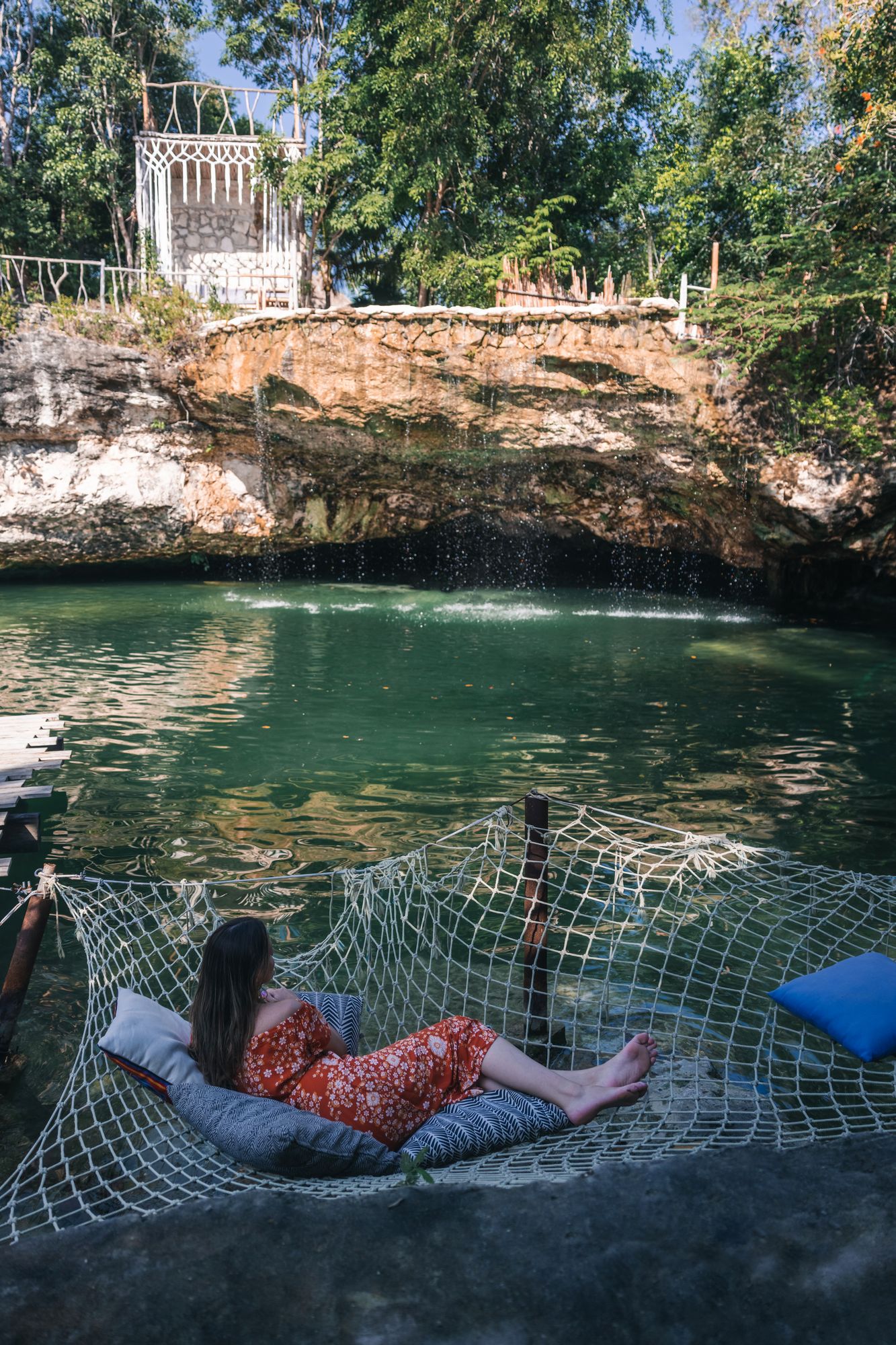

Buuts’ Ha’ Cenote Club
When you stroll into this club, the first thing you’ll notice is the giant hand statues standing over the balcony of the establishment. In some ways, they’re symbolically welcoming you into the arms of this unique day club, and that same welcoming atmosphere fits into their service.
Buuts’ Ha’ is likely the only club you’ll find in Tulum situated directly over a cenote. There are railings and stairwells to swim inside the cenote and under the rock formations. The food is also quite good and very well presented!
You can make reservations and book for specific shows on the Buuts’ Ha’ website.
Kanan Tulum Beach Club
The Kanan Tulum Hotel and Spa is a nice establishment to stay in, but I think its Beach Club is special for the fun ropes and playground structure it has. Built on top of white beaches across glittering waves, this beach club just has such a classic island-style texture to it.


Kanan Tulum Beach Club
The building is made from what looks like driftwood and dried tropical leaves, essentially stacked like a treehouse. It has a great vantage point of the beach and feels like such a perfect place to lie back and enjoy a drink under the shade of an umbrella.
Taboo Beach Club
Settling comfortably on the sands of Tulum Beach, the Taboo Beach Club boasts a wide assortment of entertainment facilities and shows to accompany a summer stroll under the sun. The club offers comfortable beds on the sands and warm parties with live music and performances.
The club also has a fantastic tropical interior, with lovely sown lamps and bridges leading into the green outdoors.


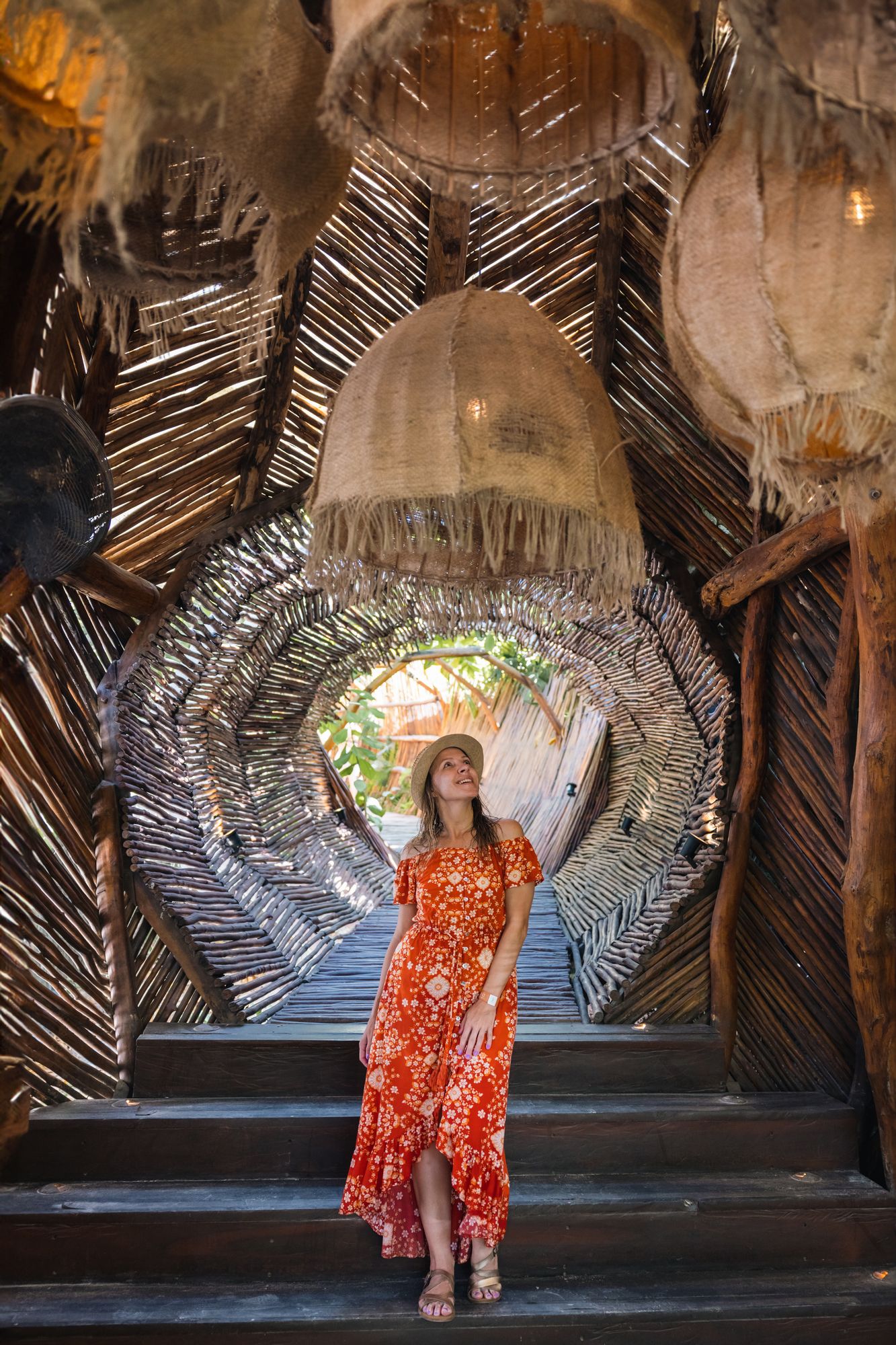
Taboo Beach Club
Things to keep in mind
Many people visit Tulum every year, and thus the area has been heavily impacted by overtourism. As a newcomer, you’ll probably want to remember these tips to make your visit here even better:
Research and book a good travel agency.
Taxi prices and rentals here can be quite high when you don’t know what you’re looking for, so having a local tour guide helps immensely. My group and I booked a tour with Go Tulum Travel, who helped book the hotels and all the transportation to the unique destinations you’ve seen so far.
They also offer a fantastic yacht tour option, which is as luxurious and amazing as it sounds. If you’re interested in cruising through Tulum’s oceanside waters, I’d highly recommend it.

A yacht trip from Go Tulum Travel
Read and follow the rules
As I’ve hinted before, the people of Tulum have a lot of care for their cenotes. These are geological structures that have a lot of importance for the people of the region, and they should be preserved for the future.
The rules you’ll find just before visiting a cenote are crucial to the health of these cave systems. If you plan to swim, always take a shower and wear a life jacket before entering. Don’t bring any sunscreen or other chemicals that could spoil the water. If there are any other rules attached to the cenote’s entrance, please keep them in mind as well.
Avoid the crowds
A good general rule of thumb in enjoying Tulum is to avoid the crowds. The city and region are quite viral, and many of the places you’ll come to find out about will attract a lot of attention.
Most attractions will open at around 8 or 9 AM, so you can come during that time to keep away from the queues. The more popular location, the more you should prioritize coming in with the early birds.
Places to stay
This boutique hotel is inspired by the classical Mayan architecture that breathes through Tulum and has a natural, relaxing atmosphere emphasized by traditional decals.

Hotel Muaré
The Muare Hotel offers guests private amenities, a rejuvenating spa, an authentic restaurant with a poolside view, and much more. My room had a beautiful curtained opening to a wide garden with tropical flora. I think after all the excitement of exploring Tulum’s cenotes and civilizations, this was a great way to unwind and relax at the end of a long day. You can book a room here!
Casa Malca

Casa Malca
The Casa Malca is a unique hotel with a lot of artistry and charm. It has a great view of the beach and an eclectic sense of design, both from the interior and exterior. The halls and rooms of this hotel are colored with Expressionistic art pieces, reminiscent of Picasso and Kahlo, pinned by lush cushions and luxurious chairs.
Even the outside area is dotted with bold curtains, art installations, and gilded seats, a kind of wild arrangement that brings out much of the aesthetic history of South America as a whole.
You can book a room here!
Tulum’s charm glows through the bustling crowds and vibrant atmosphere. Unlike the modern resort style of Cancun, driving a couple of hours into Tulum feels like heading into a distant era, now alive with a modern twist. It’s a truly captivating experience that can’t be described unless you’ve visited it yourself. Hopefully this travel guide to Tulum will help you further explore this fantastic region!
Are you planning on heading out to Tulum for your vacation?
Interested in other beach-side festivities and summer getaways? Check out my first-timer’s guide on the Kauai Island in Hawaii here!

